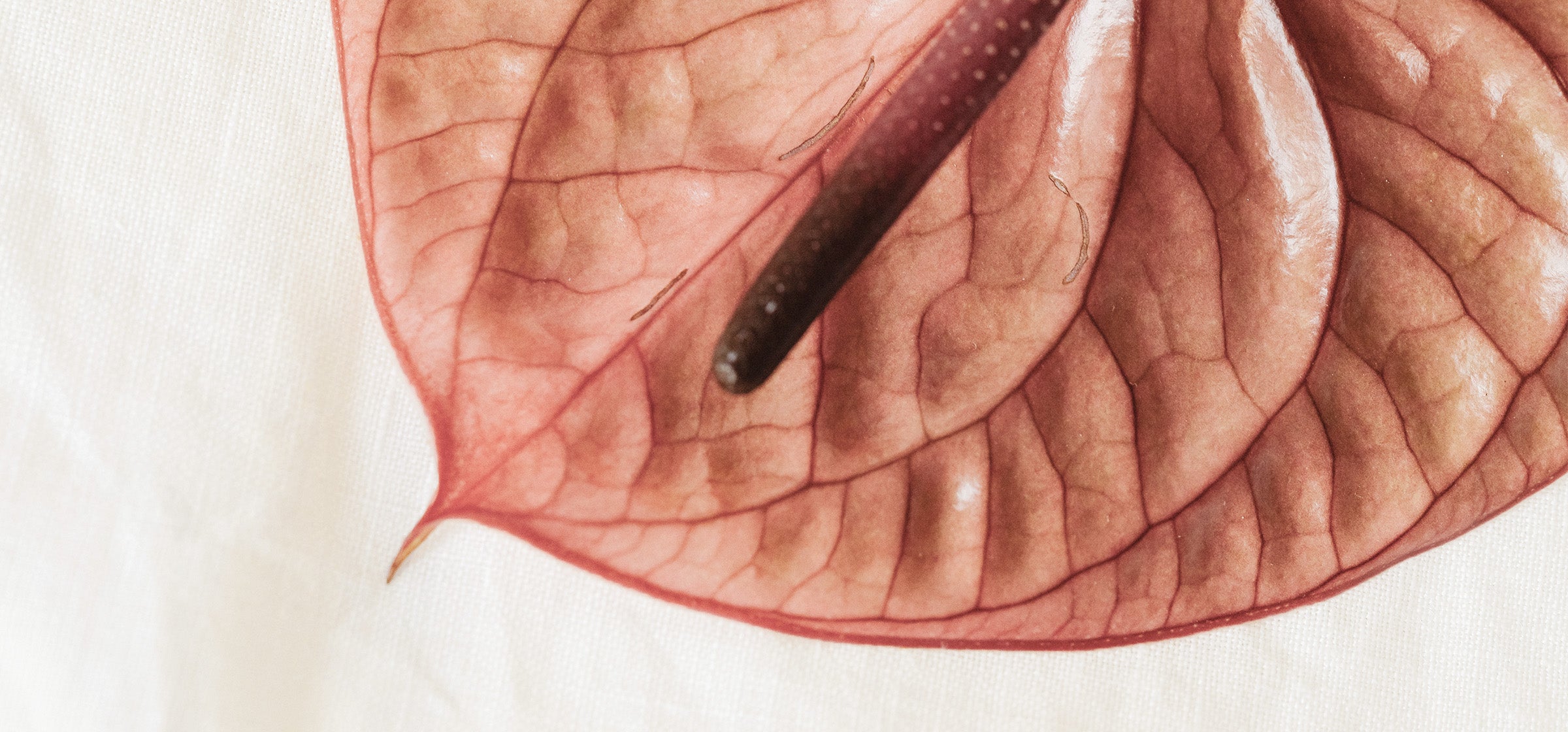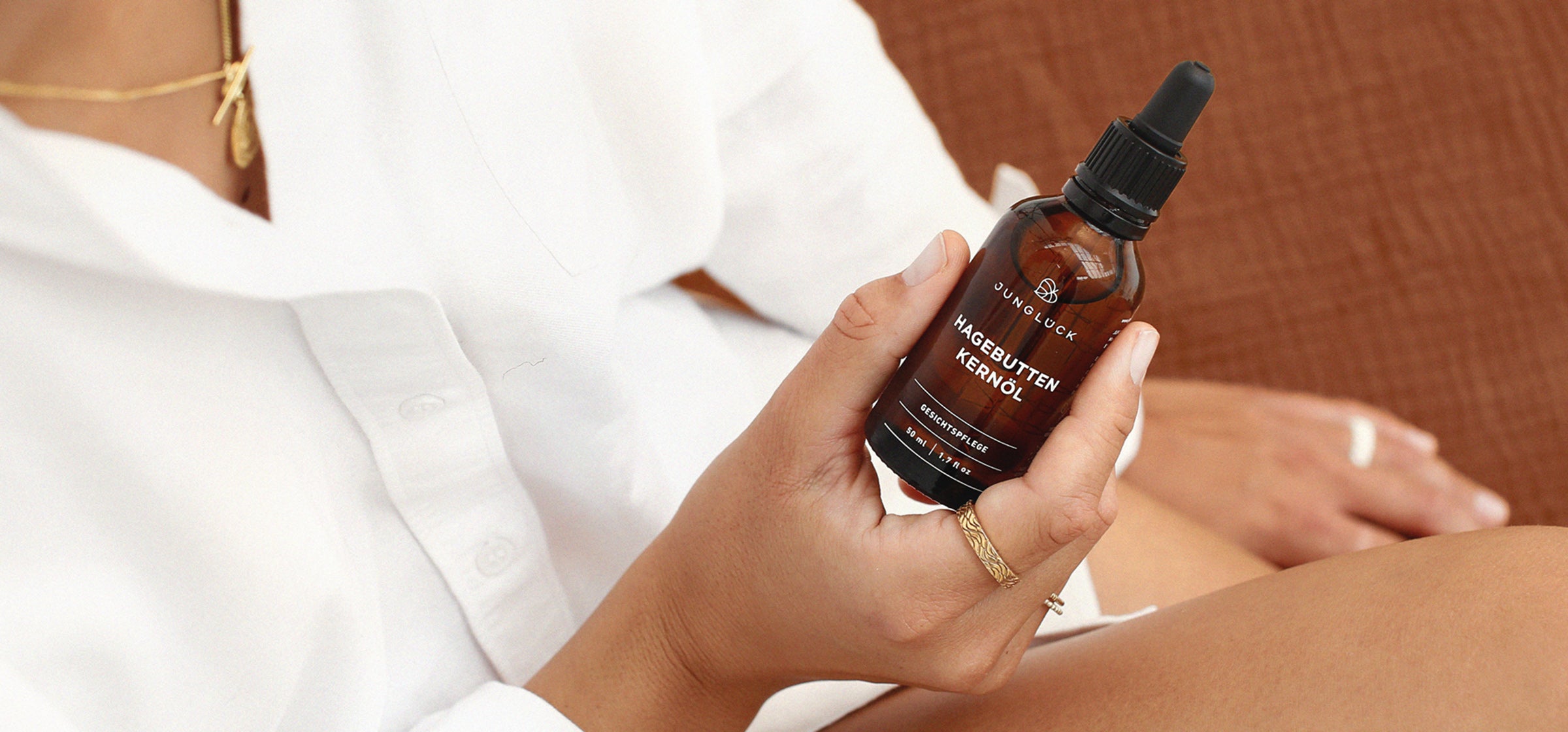ROSACEA, NEURODERMATITIS AND COUPEROSE - WHAT TO DO?
Do you sometimes want to hide away? Itching, burning, dry patches - it can be quite a strain on body and soul. But what is really behind the diagnoses of couperose, rosacea or neurodermatitis? In this article, we tell you more about the topic, Tone symptoms and causes and give you tips that can help you in such situations.

ROSACEA
What is rosacea?
The red cheeks! They have been a sign of good health, happiness and positive radiance for centuries. But what can you do if your cheeks are permanently red and won't go away? Dermatologists usually diagnose it as rosacea.
Translated, this is a chronic inflammatory skin disease that progresses in episodes and varying degrees of severity. It usually occurs for the first time between the ages of 30 and 40. Initially, the symptoms may subside, but in later stages the traces remain clearly visible.
How does rosacea progress? And what is couperose?

At the beginning, there are often so-called flushes (rosacea diathesis). Sudden, fleeting reddening of the skin. The main areas are the cheeks, nose, chin and the middle of the forehead. In the next stage (rosacea erythematosa-teleangiectatica), as can be seen in the illustration on the left, there is already vasodilation. As a result, small veins become visible to the naked eye and the connective tissue loses its strength. This means that the cells cannot contract again. Itching, dryness, flaking, burning and stinging pain are not uncommon at this stage. The skin looks as if it has been exposed to too much sun. And this condition is also known as couperose.
If the stage of rosacea papulopustulosa is reached, inflammatory, reddened blisters (pustules) and small nodules under the skin (papules) appear. This is often misdiagnosed as acne. At first glance, the skin looks similar.
Severity III of rosacea (glandular hyperplastic rosacea) is characterized by enlarged connective tissue cells and sebaceous glands. Bulbous growths can be the result and are very distressing for those affected.
The phases of rosacea are fluid. However, with the right care and an adapted lifestyle, symptoms can be alleviated and flare-ups reduced.
What are the causes of rosacea?
Unfortunately, there are currently no clear triggers for rosacea. There are some assumptions! For example, genetic factors are also said to play an important role. However, there is a lack of scientific evidence for this. Too much UV radiation, too high temperatures and other environmental pollution, such as pollen and exhaust fumes, are cited as possible causes. Chemical ingredients such as perfumes or fragrances, overly alkaline washing surfactants or drug-related side effects are also suspected. As you can see, many assumptions, but no certainty!
It is clear that skin that is plagued by rosacea needs care that is as non-irritating as possible and therefore does not have an additional irritating effect.

NEURODERMITIS
What is atopic dermatitis?
"Please don't scratch, I'm sensitive!" That's probably what someone with atopic dermatitis would think. Neurodermatitis, also known as atopic dermatitis, is also a chronic inflammatory skin disease. In contrast to rosacea, it can develop in childhood and disappear again over the years. Sometimes, however, it persists.
What characterizes atopic dermatitis?
- Very dry skin
- severe itching and
- Reddened, scaly skin rash
These are the most common symptoms of atopic dermatitis. The bends of the arms and knees, neck and hands are most frequently affected by the unpleasant spots. But itching and other symptoms can also spread to the rest of the body. If you have atopic dermatitis, then you may be familiar with it: sleepless nights and, if it's really bad, even gloves to avoid scratching yourself unknowingly. This is often not easy, especially for children.
How does atopic dermatitis develop and what causes it?
Scientists also agree on this. Genes play an important role in the development of atopic dermatitis. The altered skin structure with a resulting altered skin barrier is the main cause and is responsible for the typical symptoms. Allergens and other irritants can penetrate the skin more easily and moisture can evaporate. As a result, skin affected by neurodermatitis reacts much more strongly to external influences than healthy skin would. You can see this clearly in this graphic:

Caution is therefore also required here. At this point, it is very important to pay attention to what gets onto the skin. But which care products help to relieve itching and can I use for my sensitive skin ?
TAKE THE WIND OUT OF YOUR SAILS
This quickly leads to a vicious circle. The damaged skin barrier causes irritation, the irritation further breaks down the protective film and germs can penetrate. Further irritation occurs. Our immune system reacts with red alert and immediately responds with even more sensitivity. And so it goes on and on and on. Now it's time to STOP. Break the vicious circle and take the wind out of its sails. Important: Keep the stress factors for your skin as low as possible.

From a mild cleanser to an anti-inflammatory cream, there are a few things to consider when choosing the right products:
- Use mild cleansing products. For example our Cleansing Gel or the Cleansing Milk. For the body, the fragrance-free shower gel.
- Avoid frequent contact with water
- Wash with cold to lukewarm water, too hot additionally irritates our protective acid mantle
- Use skin barrier-strengthening products such as the Ceramides serum or Rosehip Seed Oil
- No excessive pressure or friction
- Use spray-on products to avoid additional friction. For example the Aloe Vera Spray for extra moisture.
- Avoid mechanical and chemical exfoliation
- pay attention to moisturizing care, such as our hyaluronic creams
- Avoid products containing oil
- Use sufficient sun screen with mineral filters
- do not allow any comedogenic substances on your skin
- do not use perfumes, fragrances or chemical preservatives
- remove mineral oils and silicones from your list
- If possible, only use a deodorant for sensitive skin

WHICH JUNGLÜCK PRODUCTS CAN I USE FOR NEURODERMATITIS OR ROSACEA?
From the very beginning, we have taken to heart the requirements that a skincare product must have in order to be suitable for sensitive skin. With a few exceptions, you can also use almost all of our products on irritated and stressed skin.
In this case in particular, it is important to strengthen the skin and allow it to heal and regenerate. In addition to the products I have already mentioned above, I have listed a few more here that can help with particularly sensitive skin or skin prone to rosacea or neurodermatitis.
As a facial tonic, for example, we have our Rosewater spray. It soothes your skin in the first step of your skincare routine, has an antibacterial yet gentle effect.
Afterwards our aloe vera gel is a true all-rounder from head to toe. Whether as Skincare, body lotion or a cold compress in very acute cases, it is a faithful companion. Thanks to the evaporation effect on the skin, it also has a pleasantly cooling effect on the skin. We also have it as Aloe Vera Spray for a fixed application in between or for places that are not so easy to reach with one hand.
Our hyaluronic creams are also based on aloe vera and therefore have a high water content. In combination with hyaluronic acid, they provide valuable moisture and essential nutrients to soothe and sustainably strengthen your skin. Redness is neutralized, your cells become more resistant and hypersensitivity is specifically reduced.
Does your dry skin need more nutrients and support to rebuild the skin's protective barrier? You can use the Rosehip Seed Oil for this. With its high content of carotenoids (provitamin A), the oil antioxidative has an effect and stimulates your cell renewal. It is also rich in polyunsaturated fatty acids, which strengthen your skin Moisturize and its protective skin barrier. It also supports cell renewal and helps the skin to renew itself. You can find out more about our Rosehip Seed Oilthis article to find out more.
Sun cream is a MUST for the day. Protection from UV radiation is essential, especially for damaged skin. However, it is best to stay in the shade to avoid skin irritation and escape the heat. Important here: A sun screen without irritating alcohols and fragrances.
And for in between: Our Hand Cream. Thanks to ingredients such as vitamin E, radish root and aloe vera, it noticeably strengthens the skin barrier and does not burn in open areas.
CURSE OR BLESSING - CORTISONE CREAMS
However, if you can't take it any longer and go to a dermatologist, you often leave the practice with a prescription for a cortisone ointment. Cortisone is an endogenous hormone in the glucocorticoid category. Like many other hormones, cortisone is also produced in the adrenal cortex and distributed throughout the body from there. Among other things, it is involved in the regulation of inflammatory processes and suppresses an excessive immune response. Cortisone ointments therefore provide relief for our skin.
Sounds simple at first, but there are a few things to bear in mind here too! The creams should only be applied locally to the affected areas and the application must not be stopped suddenly. Gradual discontinuation prevents a relapse. These dosage forms should also not be used for longer than 6 weeks at a time. However, the skin structure can suffer in the long term.
Possible consequences:
- Skin thinning
- Poor wound healing
- Hair root inflammation
- Pigment disorder
However, we are back in the field of pharmacy here and as we know: it's the dose that counts! Therefore, this is all generalized and the doctor's individual recommendation should always be followed!

GOOD FOOD, GOOD LIFE - NUTRITION AS AN INFLUENCING FACTOR
It's all about the food - Rosacea or neurodermatitis also often raises the question - what part does our diet actually play in all of this? Exact correlations are not yet known, but there are a few pointers that should be followed. For example, it is important to eat a wholesome diet so that there are not too many acidifiers in the body and the immune system does not have to work overtime. Excessive consumption of dairy products and animal fats should be reduced. Instead, omega-3 fatty acids and plenty of fruit and vegetables are important for the body.
Hot spices and excessive exertion can stimulate blood circulation and should therefore be avoided as far as possible. This means more stress for our cells.
CONCLUSION
Our skin is a mirror of our soul - this can be seen very clearly once again in this context. Every skin is individual and has different needs. If your skin is one of the more sensitive types, it is all the more important to recognize and identify your own skin characteristics and adapt your lifestyle accordingly. Mindfulness is the best medicine, especially when it comes to skin! Listen to yourself & trust your body - it will show you what is really good for you!














